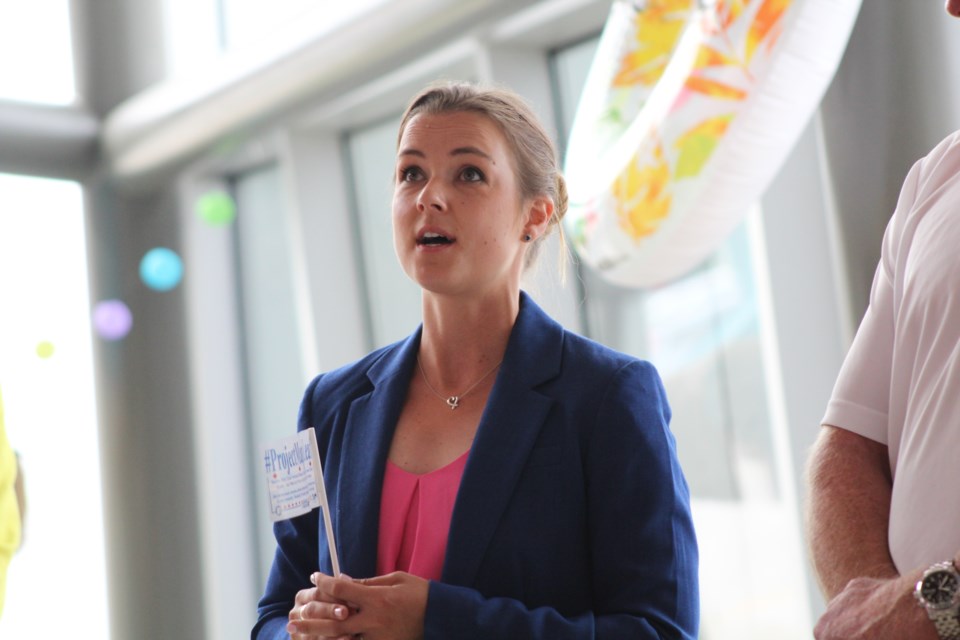The health of Lake Simcoe is staying top of mind in provincial decision-making, says a local MPP, despite concerns from some local environmental groups that believe otherwise.
The Rescue Lake Simcoe Coalition and the Simcoe County Greenbelt Coaition released a report March 29 called Lake Simcoe Under Pressure in 2021: Key Stresors and Solutions outlining their concerns on the impact that government decisions on several local projects — including the Bradford bypass, the Orbit development in Innisfil, Upper York Sewage “Solution” (UYSS), and growth planning — will have on the lake.
The groups say the province is not looking at these issues in their totality, and believe the cumulative effect of all of the projects will ultimately overwhelm Lake Simcoe.
Barrie-Innisfil MPP Andrea Khanjin, who is also the parliamentary assistant to the Minister of Environment, Conservation and Parks, said through the Made-In-Ontario Environment Plan, the provincial government is committed to implementing the Lake Simcoe Protection Plan (LSPP).
“Ontario and its partners are implementing the (LSPP) by funding research to support innovation; monitoring environmental indicators to track change over time; influencing action on the ground through outreach and partnerships; and sharing information to support evidence-based decision-making,” Khanjin told BarrieToday.
An investment of $581,000 for such projects was announced last summer, she added, and will help reduce the amount of pollutants and nutrients, such as phosphorus, from entering Lake Simcoe.
After a decade of sustained effort, Khanjin said progress is being made toward long-term objectives despite challenges resulting from the considerable population growth in the watershed.
“Although phosphorus loads have been high in recent years, phosphorus concentrations in the lake have been consistently low," the MPP said. "The amount of algae in the lake has also decreased since 2009.
“Most importantly, improvements are being seen in dissolved oxygen levels in the lake’s deep waters, which will help support a self-sustaining cold-water fish community in the long term," Khanjin added.
The government’s priority, she noted, is to support healthier communities and economic prosperity through stringent environmental rules and requirements.
“The Ministry of Transportation has already completed a comprehensive environmental assessment for the Bradford bypass project and its potential environmental impacts are well understood,” Khanjin said. “The proposed Bradford bypass regulation, if approved, would ensure continued environmental protection while reducing timelines to allow the implementation of this critical infrastructure faster, if all conditions are met.”
A decision has not yet been made on the proposed regulation, she noted.
A decision has also not been made on the Upper York Sewage Solutions Environmental Assessment application, Khanjin added.
“We are committed to working collaboratively with municipalities to help find a responsible solution to water and wastewater infrastructure that will address the region’s needs while safeguarding the environment," she said. "Our government remains committed to protecting and restoring Ontario’s lakes and waterways.”
In Barrie, Coun. Clare Riepma sits on the Lake Simcoe Region Conservation Authority (LSRCA) board of directors, an organization that is mandated with the protection of the lake and has been working hard to improve environmental conditions around the lake.
“In some respects, the lake is in better condition than it was years ago. However, it is under significant pressure because of the urban growth that is occurring in the watershed,” he said.
Although the LSRCA has not been asked to comment on the proposals put forth in the March 29 report, Riepma said his personal perspective is that some form of environmental impact is likely.
“We will need to decide how best to mitigate those effects,” he told BarrieToday. “One of the options would be not to proceed with the project(s). However, if some form of growth is to occur, there will be a need to balance the benefits and the costs.”
Closer to home, Riepma said the City of Barrie does a lot to enhance the water quality in Kempenfelt Bay, which is connected to Lake Simcoe.
“We have a very advanced treatment plant, and extensive network of stormwater management ponds and are spending millions improving and maintaining our watercourse," he said. "Can we do more to prevent erosion, reduce salt usage, to name a few? Yes, of course we can, but it comes as a cost to the taxpayer.”


